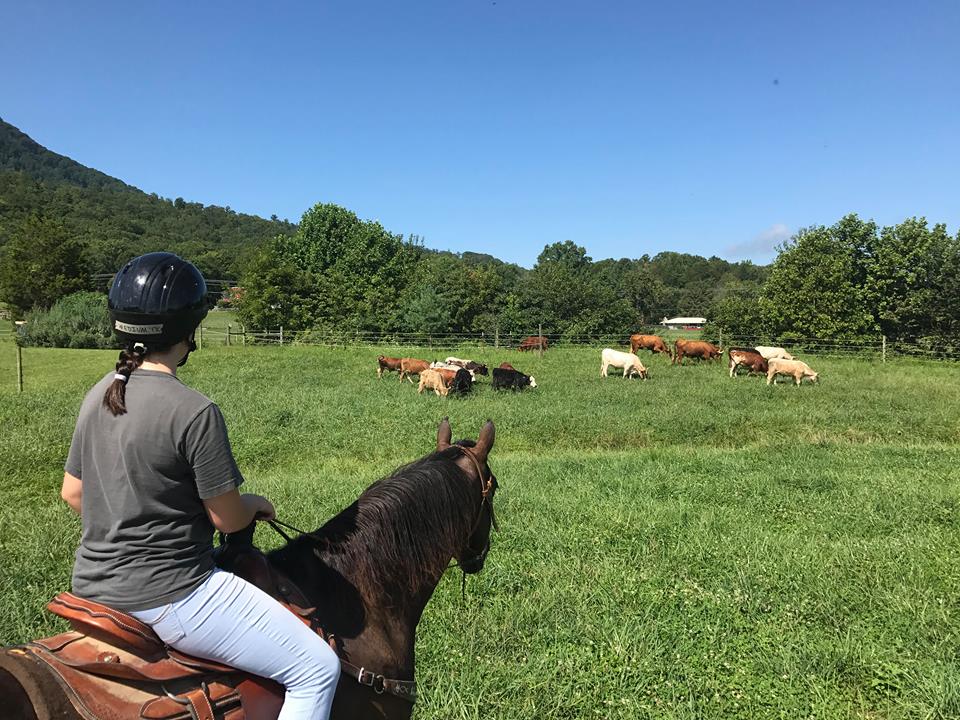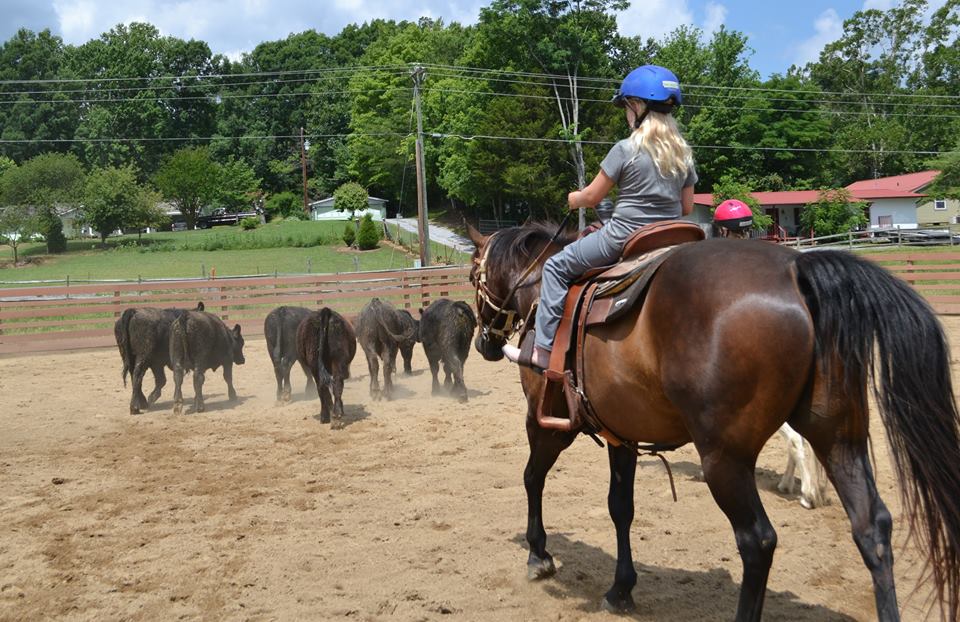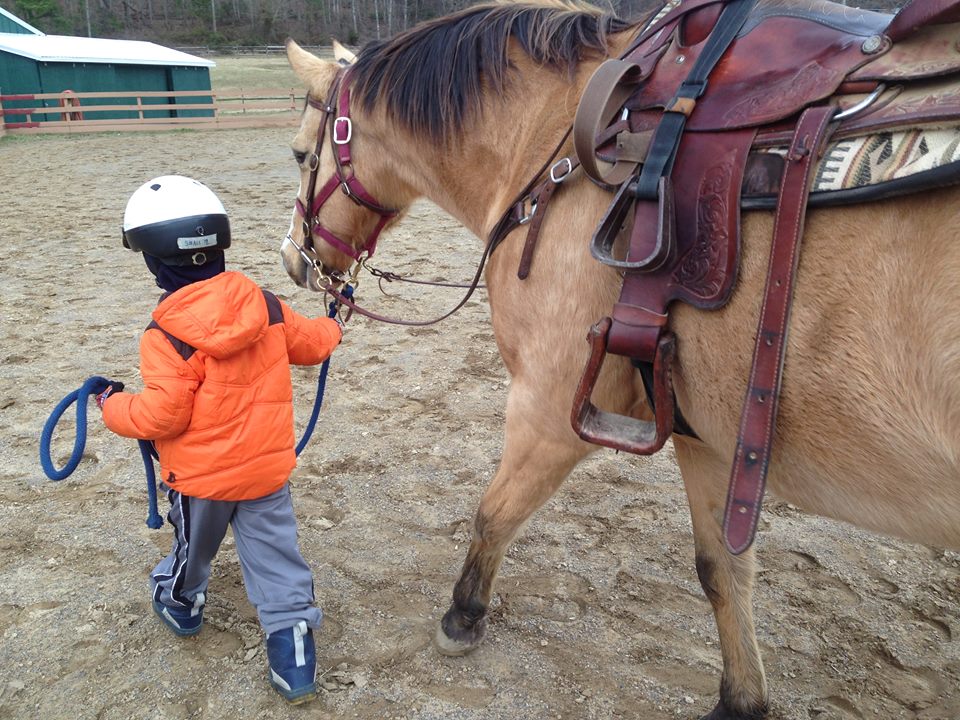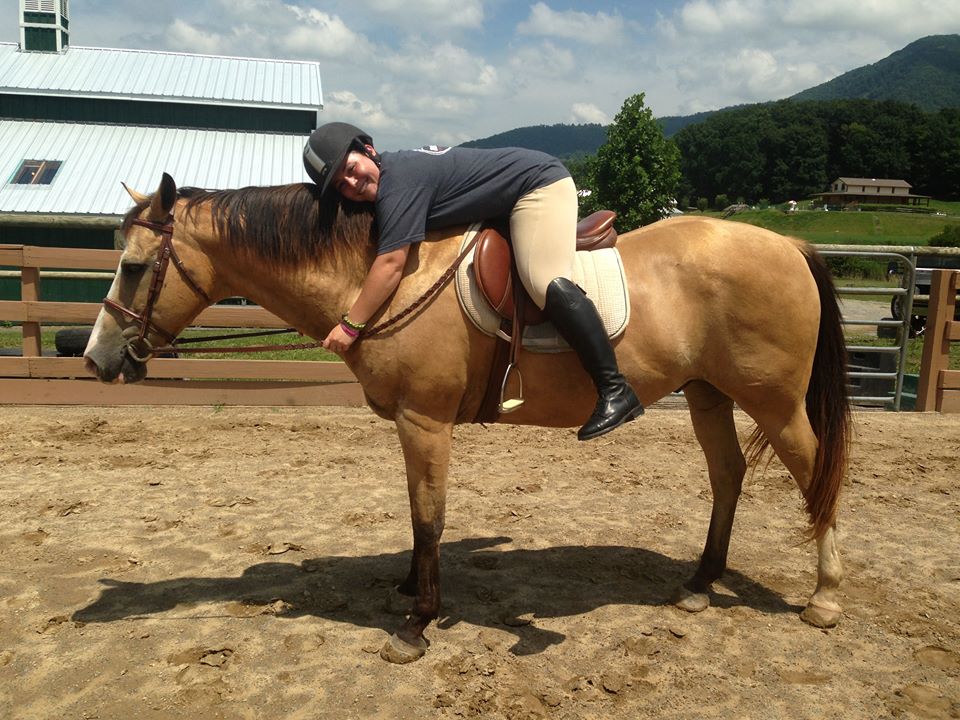As part of the therapy offered to the children at the group home we worked at, kids took horseback riding lessons. While we houseparents were not required to attend these lessons, I snuck my way in by showing up at the barn during our days off. I knew this was the closest I’d ever get to having a horse and the 12-year-old girl inside me just couldn’t walk away from that opportunity. I learned so much by watching how my boys interacted with these giant beasts. And I learned a lot about myself.
I am not a fearful person, but I do like to be in control and I can tend to be cautious in situations where things feel out-of-control. . . you know, like when you’re on a giant animal who could get easily spooked and throw you to the ground. Learning to ride a horse as an adult was an exercise in trust and it required me to be much calmer than I felt. When I worked past some of my instinctual fears, I realized a lot of what I was learning about communicating with this horse had a direct correlation to the parenting I was doing.
Before getting on a horse, most of what I knew about riding came from what I saw in movies. Kick the horse to make it go, yank back on the reins to make it stop. As you can imagine, this is not the way to have an optimal riding experience. What you really want is the least amount of pressure to get them to do what you want them to do and as soon as they move in the right direction, you stop applying pressure. With a well-trained, responsive horse, a gentle squeeze of your calves might be all you need to get them moving and as soon as they move, you quit squeezing.
The same applies for stopping. Gently pulling back on the reins should make your horse stop and as soon as they stop, you quit pulling back. Here’s what I learned from watching scared kids try to make a horse stop—they would pull back too hard and didn’t know when to stop. Instead of making the horse quit moving, they actually communicated to the horse to start backing up. To see a kid wildly flailing around on a horse was to know that they weren’t effectively communicating and somebody could potentially get hurt.
The longer I’m a parent, the more I think motivating and reining in our kids works about the same way.
First of all, it may require you to be more calm than you feel. We can talk all day about the positives of being “authentic” and “transparent,” but sometimes what your kids most need is to think you’ve got it under control even when you’re authentically terrified and you’d like to be transparently angry. If we want the best out of our kids, we need to take a deep breath and be calm when they are chaotic. When you work with large animals you want to be low and slow. I find it can be helpful to work similarly with anxious kids. I speak in a low voice and I move slowly—gently patting their back, or a gentle hand on their shoulder.
When I want a child to stop a behavior, I need to find the most gentle way to intervene that will get them to stop. I don’t want to yell if a whisper will do. I don’t want to threaten to ground them for a month, if ten quiet minutes in their room would communicate the same message. If I can jokingly remind them of the rules with a smile on my face, I’d rather do that then sarcastically humiliate them. Ultimately, I want to be able to manage my kids by giving them a serious look from across the room. I want them to know I mean business and I want them to know I’ll give them grace whenever I can.
What I’ve found is that when I start with the gentlest level of intervention, it often works and I never have to become Angry Mom. It does mean that when the gentlest level doesn’t work, I step it up until I get the response I need. Sometimes you have to do that so your kids know to believe you when you gently remind them of the rules. Just like with reining in a horse, the moment I see the child doing what I’ve asked them to do, I stop applying the pressure. No long lectures. No continued ranting once it’s been dealt with.
I don’t want you to get the wrong impression about the interactions I have with my kids. I don’t whine at them. I’m not begging them to obey me. I’m not minimizing their behavior. I’m not making excuses for them. I’m just choosing to intervene gently and calmly when I can. If you’ve ever tried to whine at a horse, you know how ineffective that is. You have to communicate in ways that matter to your kids and when we can avoid shaming or raging at them, we’re more likely to get the behavior we want. Whether you’re dealing with kids or horses, it matters when you treat them with respect.
Just like reining in a horse, if you apply too much pressure instead of getting your kid to stop, you may accidentally encourage them to move backwards. They may rebel, they may stop listening to you or respecting your authority, they may become bitter and resentful, they may develop the skill of tuning out your angry voice, or they may become afraid of you. We don’t want to become that inexperienced rider, wildly flailing around on their horse. We need to be intentional about applying that appropriate amount of pressure that the situation requires.
And when we’re spurring our kids on toward good behavior, we want to do it in gentle ways that give them the most room to soar. We don’t want to keep applying pressure and more pressure when we see they’re doing the right thing. We want to back off and let them show us what they’re capable of. It’s one of the most freeing and rewarding parts of being a parent to see your child moving in the right direction without you having to constantly direct them.
There are some days I parent in a similar way to how I rode horses— responding in fear, overcorrecting, stressing everybody out. It’s not the parent I want to be and reminding myself of what I’ve learned from riding horses helps me to calm down and be an intentional mom. It’s all about the right amount of pressure applied in the right way at the right time. The least amount of pressure that gets the job done.
*All pictures in this post are from my friend Ryan McCaffrey who is the equestrian director at Wears Valley Ranch. He was also kind enough to look over this post and make sure it was accurate from a horsemanship perspective. If you are interested in how horses can be used in the work of helping kids heal from trauma, I would encourage you to check out his program.





2 Comments
Leave a reply →